Myanmar
Things to DO
Toungoo
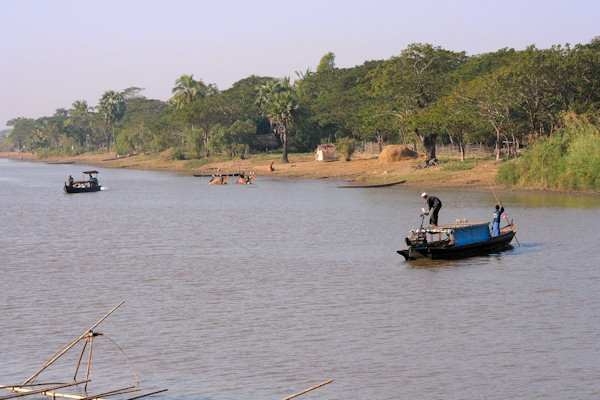 |
|||||
Delta Region
One of the most fertile regions of the country, the Delta Region streching from the Bay of Bengal coast across to the
Bago Range recieves the rich nutrients deposited by the Ayeyarwady, Bago, Yangonand Pathein Rivers.
This riverine network irrigates millions of hectares of farmland, making the delta essentially one of the "Rice bowls" of
Myanmar.
In addition, the estuarine environments along the coast provide much of the country's saltwater and freshwater fish harvest.
Because of such natural abundance, the delta is one of Myanmar's most populated - and interesting - regions to explore.
Several communities in this coastal areas of this region felt the impact of the December 2004 Tsunami and the majority of
the resulting deaths reported by the government occurred here.
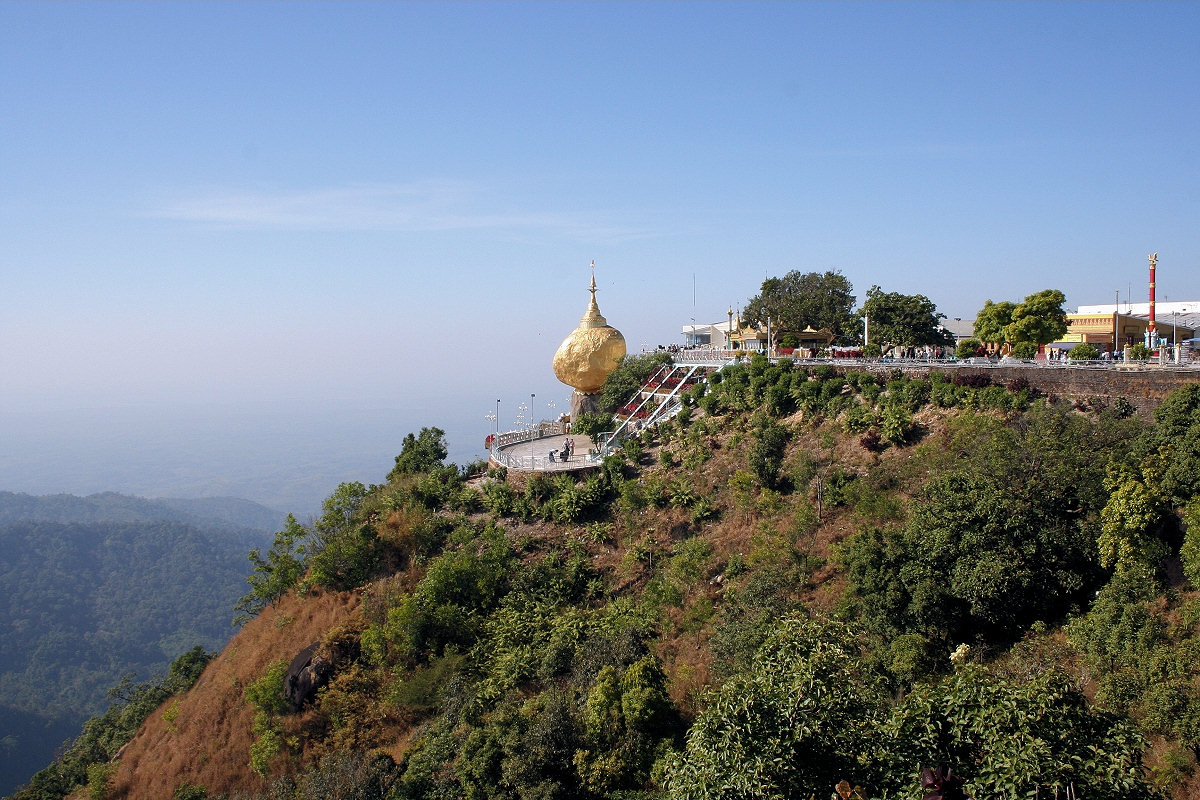 |
|||||
Kyaiktiyo
The sublime balancing boulder stupa, called Kyaiktiyo is a major pilgrimage site for Burmese Buddhists and tourists alike.
The small stupa, just 7.3 meters high, sits atop the Golden Rock, a massive, gold-leafed boulder delicately balanced on the edge
of a cliff at the top of Mt. Kyaikto.
Legens states that the boulder maintains its precarious balane due to a precisely placed Buddha hair in the Stupa. Apparently
King Tissa recieved the Buddha hair in the 11th century from a hermit who had secreted the hair in his own topknot.
The hermit instructed the king to search for a boulder whose shape resembled the hermit's head, and the enshrine the hair in a stupa
on top.
The king, who inherited supernatural powers as a result of his birth to a "zawgyu" (an accomplished alchemist) father and
"naga" (dragon serpent) princess, found the rock at the bottom of the sea, and transported it to the top of this mountain.
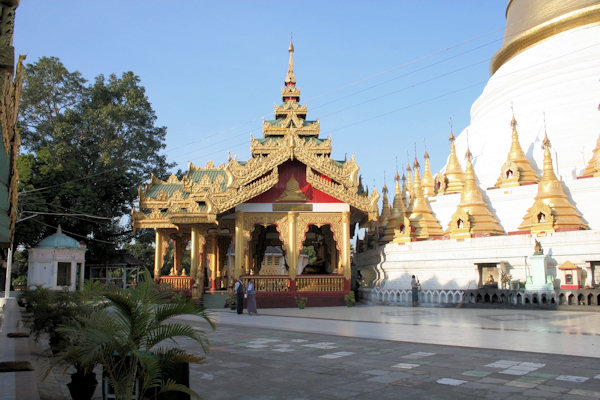 |
|||||
Toungoo
Situated in the centre of town the Shwesandaw Paya dates back to 1597. A pavilion on the western side of the stupa contains
a 3.6 m bronze sitting Buddha, given to the paya in 1912 by a retired civil servant who donated his body weight in bronze and silver
for the casting of the image. He died three years later at age 72; his ashes are interred behind the image.
Myasigon Paya is the most interesting of the zedi in Taungoo. A brick pahto (hollow shrine or temple) beneath the stupa
features glass mosaic arches, paintings of Taungoo kings and a hudge, bronze-and-silver-faced sitting Buddha in royal attire.
The image is surrounded by planet Buddhas (Buddhas for specific planets, corresponding to the days of the week), an arrangement
usualy reserved for stupas.
Opposite the large sitting image, against a couple of pilars, are two Chinese bronze goddes statues, one sitting on an elephant,
the other on a Fu dog.
Kalaw
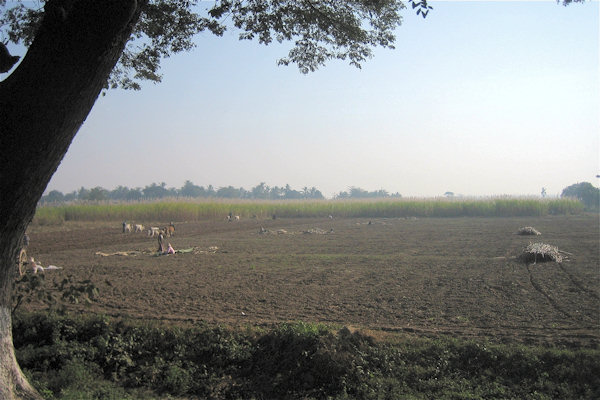 |
|||||
Agriculture is the primary economical source of livelihood.
Primary crops grown around Kalaw are rice, wheat, maise, peanut, sesame, cotton, legumes, tobacco, chilli, and vegetables.
Industry, including alcoholic breweries, textile factories, sugar mills also exists.
Whenether it's a short day hike or a five-day journey, trekking is the main reason to come to Kalaw.
The range of territory open to foreigners seems to be expanding and local guides are willing to tailor itineries to particular
demands. With that said, certain routes get a fair bit of traffic during the tourist high season and it's not unusual
to find yourself following in the well-trod footsteps of another group.
The plateau near Kalaw is inhabited by people of the Palaung tribe.
Development in the form of running water and electricity is coming slowly but sporadically to villages in the area, and
living conditions on the whole are not as primitive as some might expect.
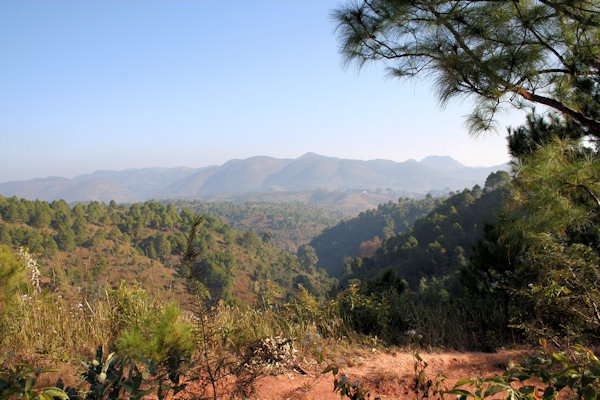 |
|||||
Continued exposure to foreigners walking the mountain footpaths or sleeping in village homes has introduced a small
element of the consumer economy in the form of children selling hats, "longyi" (sarong-style lower garments) and bags,
most made locally but some imported strictly for the tourist trade.
Most groups on day hikes stop at the Vieuwpoint, a guesthouse owned and operated by a Nepali family.
Vieuwpoint's accommodation is bare bones - no electricity, no running water - but it's extremely peaceful, and the owner cooks up
fantastic meals (assorted vegetable curries and rice).
Hikers need to be prepared witgh good shoes and warm clothing for the cool evenings. Trekking goes on year round, but expect
muddy conditions during the rainy season (May/June to November)
Pindaya
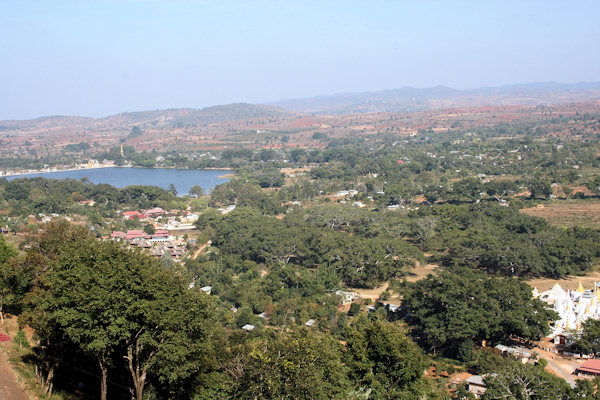 |
|||||
Pindaya is best known for it's Buddha-filled limestone caves, its picturesque Boutalake Lake and of the region's most
interesting markets, which sells everything from pancake-like snacks to gnarled fish and cooked snakes.
The town's symbol is a "pin-gu" (spider). According to legend, seven princesses bathing in the lake took refuge in the
caves during a storm, and were imprisoned by a giant spider.
Lucky for them, a prince strolling nearby heard their pleas forhelp, killing the spider and freed them from the cave.
Local handicrafts include Shan parasols made from mulberry bark. There are two Paper- and umbrella-making workshops
in town. The workshops demonstrates the step-by-step proces and sell hand-painted umbrellas.
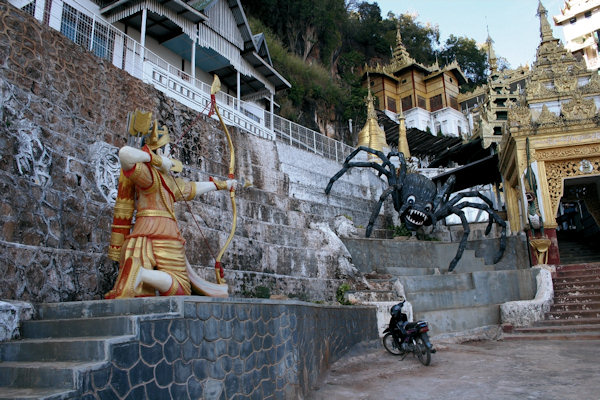 |
|||||
A strange and somewat kitschy mix of the artificial and natural and the commercial and holy; the Pindaya Caves,
in a limestone ridge overlooking the lake, are announced for miles around by the templelike structures covering the ramp and lift
to the entrance.
Once inside it's difficult not to succumb to Buddha fatique, as over 8.000 Buddha images - made from alabaster, teak, marble, brick,
lacquer and cement - have been arranged over the centuries to form a sea of serene faces in the labyrinthine cave chambers.
Small plaques below most advertise the names and nationalities of the donors.
Although many areas within the caves are illuminated by electric lights, take care on the slippery paths.
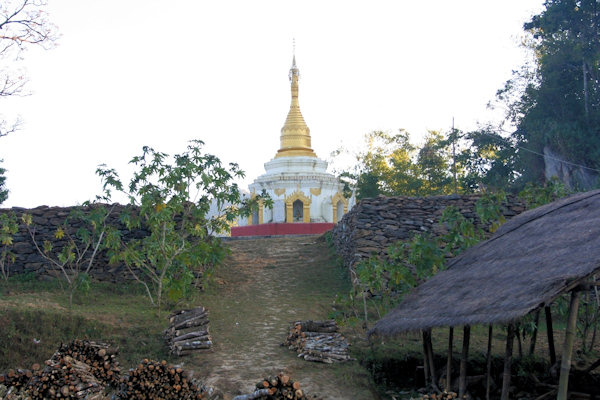 |
|||||
In Pindaya you can arrange a trip to the Yatsakyi monastry; a hike for about 17 Km; starting at 1.300m to
about 1.690m and it will take's two days- to get up and down.
On top the people are pleased to see you, as the monk - who is gaining some money from the tourist when they sleep in his monastry -
is doing verry good things for the village.
For example, beside building up his monastry, he also has buildt up a school and is now building a hospital.
The people performed dances for us, and - course of christmas-evening - they specialy send up a baloon.
It can be very cold up there,so take some warm clothing with you.